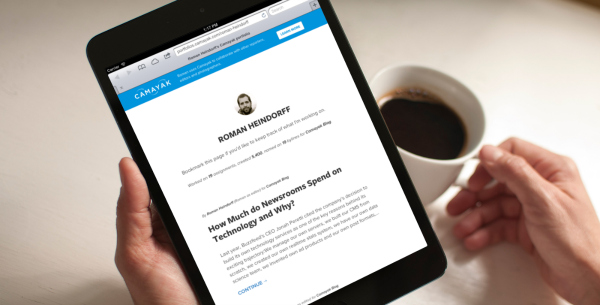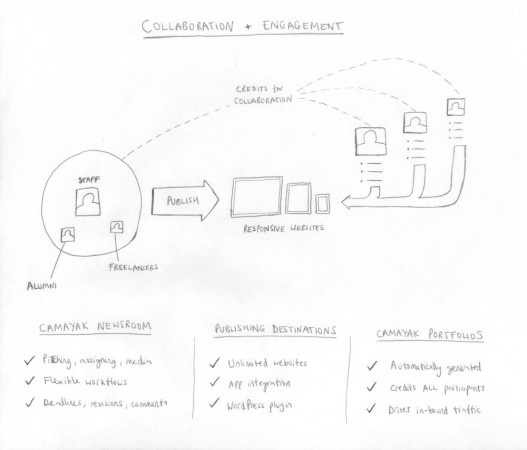
Editorial workflow has become a more popular focus area for publishers looking for opportunities to redefine themselves. At Camayak we started with the question: “what if we could make it easier for newsrooms to coordinate their daily tasks and use their own collaboration data to help them become more sophisticated?”. This week we’re taking a big step towards outlining our vision of how such digitally-conscious newsroom can thrive, by launching Camayak portfolios for all our users.
Portfolios are automatically generated public archives of everything a person has contributed to assignments that their newsroom has published. They look like this. As thousands of staff members at dozens of newsrooms activate their (free) portfolios, here are some of the upsides they can anticipate.
Staff benefits. Just because you’re not on the assignment byline doesn’t mean you didn’t play a pivotal role in its production. In fact as an editor, it’s likely that you’re one of the key members of staff forced (for practicality’s sake) to summarize your career in the newsroom with just one line: Editor-in-Chief, or News Editor for example – titles which might do your efforts little justice and make it difficult for potential employers to evaluate you fairly.
Whether you’ve edited, written or researched for an assignment using Camayak, you will now have all your credits automatically collected and displayed as links on your very own optional portfolio. Portfolios are fundamentally designed to help you promote your work. By making it easy to showcase the assignments you played a role in producing, your skills, application and passion are well advertised.
Organization benefits. One of a newsroom’s primary goals is to share links to its content in as viral a manner as possible (therefore usually via social media). But automatically tweeting a new post doesn’t constitute a valuable sharing policy on its own. Furthermore, how many of the team who’ve worked on an assignment can be consistently be expected to tweet the link when they’ve just published their breaking news piece at 2 a.m.? This process is one we’re keen to help newsrooms automate. 
Imagine you’re a campus news organization with 50 new staff every year that produces around 25 assignments a week, for thirty weeks of the year. On average, four people are involved in every assignment (e.g. a writer, photographer, copy editor and desk editor), so when an assignment gets published, Camayak automatically generates links on those four people’s portfolio pages, documenting their input and leading visitors to your site(s).
Every year, 50 new portfolios with links to your content will pop up: directing traffic to your publishing platforms and advertising the affiliation the person had/has with your newsroom. After three years, 150 individual portfolios with 9,000 links will be pushing traffic to the 2,250 assignments on your publishing platforms. Remember: this involves no extra work whatsoever.
Attracting new contributors and user-generated content may also benefit from the promise that these one-time contributors can launch their own portfolio as a result of their participation with your newsroom.
Camayak’s benefits. What we’re most excited to see is how portfolios will benefit people that are looking to leverage their media skills both in collaboration with their peers and professionally, in the form of resume-building.
We also feel that people with active portfolios will be more accountable for the content they’re participating in. Those who perform admirably in their newsrooms will especially benefit from a transparency that links their personal profile with the content they’ve helped produce.
This, we hope, will further contribute to helping newsrooms focus on what they do best and produce better content.
Roman Heindorff (CEO & co-founder) can be reached at roman@camayak.com